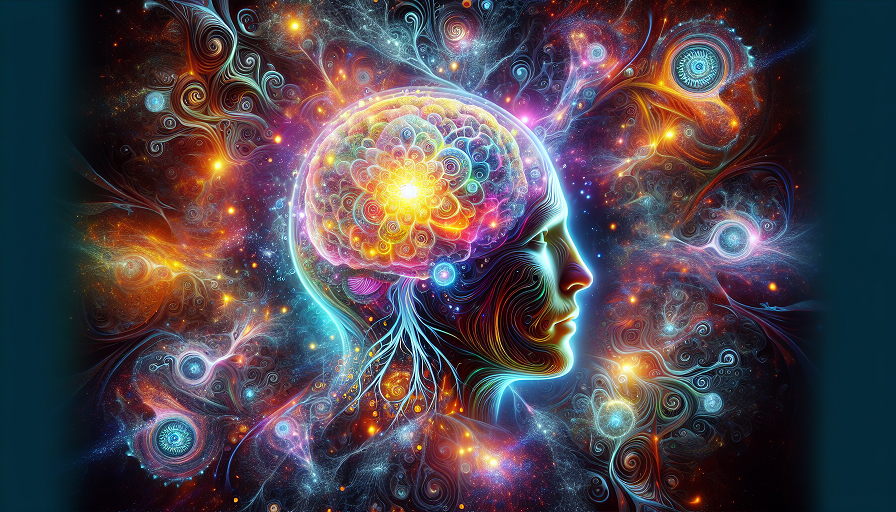
You wake up with a sentence in your mind that makes no logical sense… but somehow feels important.
Or maybe a half-forgotten dream lingers, strange and nonlinear, but oddly aligned with something you’ve been trying to solve.
Welcome to the twilight world of dream detours — those winding, surreal, and sometimes nonsensical thoughts that emerge during sleep but carry the seeds of genuine insight.
Far from being random neural static, these dreams offer a unique window into the brain’s creative mechanisms — showing how, when freed from waking logic, the mind weaves together ideas in ways that conscious thought rarely can.
Contents
- Why the Sleeping Brain Thinks Differently
- How Dreams Unlock Creative Problem-Solving
- Real-World Examples: Innovation Born in Dreams
- Interpreting Dream Logic for Waking Insight
- The Role of Lucid Dreaming in Intentional Creativity
- Brain Supplements: Supporting Dream Recall and Creative Processing
- How to Make Space for Dream-Driven Creativity
- When Dreams Reflect Deeper Psychological Work
- Sleep as the Mind’s Creative Forge
Why the Sleeping Brain Thinks Differently
During sleep, especially during REM (Rapid Eye Movement) cycles, the brain enters a radically different processing mode.
Key Neurological Shifts in Dreaming
- Deactivation of the Prefrontal Cortex: The brain’s logical control center quiets down, allowing freer association and looser connections.
- Heightened Limbic Activity: Emotion-related areas become more active, making dreams feel vivid and meaningful.
- Increased Hippocampal Involvement: The memory center helps remix past experiences into new scenarios and combinations.
- Enhanced Default Mode Network (DMN) Activity: Associated with self-referential thinking and imagination — highly active in dreaming states.
In dreams, the guardrails of logic loosen — and creativity often rushes in to fill the space.
How Dreams Unlock Creative Problem-Solving
Some of the most famous breakthroughs in science, art, and innovation have come — not during hard thinking — but in sleep.
Mechanisms Behind Sleep-Inspired Creativity
- Incubation Effect: Dreams allow subconscious work on problems, integrating diverse ideas while bypassing conscious constraints.
- Abstract Recombination: The brain merges unrelated memories, emotions, or symbols into novel concepts.
- Reduced Fear of Failure: With logic turned down, the brain “tests” ideas without the pressure of correctness or criticism.
- Symbolic Thinking: Emotions, dilemmas, and desires are translated into metaphor — sometimes offering powerful psychological clarity.
Dream detours don’t take you off course.
They reroute you toward ideas you wouldn’t have reached otherwise.
Real-World Examples: Innovation Born in Dreams
History is filled with thinkers who woke from dreams with solutions, structures, or sparks that changed everything.
Famous Examples
- Dmitri Mendeleev: Reportedly saw the entire periodic table in a dream, with elements arranged in a logical structure.
- Mary Shelley: Dreamed the idea for Frankenstein after a haunting night of story-sharing and sleep.
- Paul McCartney: Woke with the melody for “Yesterday” fully formed in his mind — he initially believed it must be a song he’d heard elsewhere.
- Elias Howe: Discovered the design for the sewing machine needle after dreaming of being attacked by warriors with spears that had holes near their tips.
Creative brilliance isn’t always born in boardrooms.
Sometimes it rises from beneath closed eyes and tangled sheets.
Interpreting Dream Logic for Waking Insight
Dreams speak in metaphors, juxtapositions, and emotional tones.
But with the right tools, these abstract messages can offer useful — even brilliant — insights.
Tips for Extracting Creative Value from Dreams
- Focus on Themes, Not Details: Look for patterns, metaphors, and emotional shifts rather than literal events.
- Journal Promptly: Keep a notebook by your bed and write down fragments immediately upon waking.
- Ask Guiding Questions Before Sleep: Pose a challenge or question before bed — your mind may “reply” while you sleep.
- Revisit Recurring Symbols: Repeated elements may point to core concerns, desires, or unresolved creative tensions.
Your dreams don’t come with captions.
But they often come with clues.
The Role of Lucid Dreaming in Intentional Creativity
Lucid dreaming — being aware you’re dreaming while in the dream — offers a rare opportunity to co-create with your subconscious mind.
Lucid Dream Benefits
- Enhanced Control: You can direct scenarios, interact with dream characters, or revisit creative settings.
- Heightened Memory Retention: Lucid dreams are often more memorable and feel more personally meaningful.
- Creative Rehearsal: Artists, athletes, and performers can use lucid dreams to practice skills or explore new ideas.
Lucid dreaming is like stepping into your own mental sandbox — with infinite tools for innovation and self-discovery.
Brain Supplements: Supporting Dream Recall and Creative Processing
Some individuals support dream richness and insight capture with nootropic supplements aimed at improving sleep quality, neural plasticity, and memory consolidation.
Ingredients like citicoline, bacopa monnieri, and mucuna pruriens are studied for their potential to enhance REM sleep vividness and dream recall — helping users harness their nighttime mental adventures more effectively.
As always, consult with healthcare professionals before beginning any supplement regimen.
How to Make Space for Dream-Driven Creativity
You don’t have to be a lucid dreamer or remember every dream to benefit from your sleeping mind’s creative offerings.
Practical Habits
- Prioritize Sleep Hygiene: High-quality REM sleep is essential for vivid, creative dreaming — avoid screens, caffeine, and stress before bed.
- Keep a Dream Journal: Write anything you recall — images, emotions, dialogue, fragments. Insight often comes days later.
- Engage with Art or Music Before Bed: Emotional and symbolic content can prime the brain for dream creativity.
- Reflect Each Morning: Even if you don’t remember a full dream, ask what ideas or feelings might’ve emerged in sleep.
Your mind is working while you rest.
Give it room — and it may surprise you with its brilliance.
When Dreams Reflect Deeper Psychological Work
Sometimes, dreams bring up discomfort, fear, or confusion — but even those can carry important creative or emotional messages.
Signs of Constructive Dream Processing
- Dreams Reflecting Real-Life Problems: Often, your mind is testing solutions or reframing emotional dilemmas.
- Shifting Symbols: When dream content begins to evolve, it may signal internal transformation or resolution.
- Emotional Catharsis: Waking with a sense of release or perspective often indicates meaningful internal work.
Even your strangest dreams may be your brain’s way of reorganizing truth into something you can hold and grow from.
Sleep as the Mind’s Creative Forge
Your dreams are not random noise.
They’re the midnight workshop of your creative self — raw, strange, luminous.
So honor your sleep.
Write down your weird ideas.
Follow the detours.
And trust that inside every dream — even the bizarre ones — there might be a map to your next great insight.
Because while the world sleeps, your mind is quietly reinventing itself — idea by idea, symbol by symbol, detour by detour.

